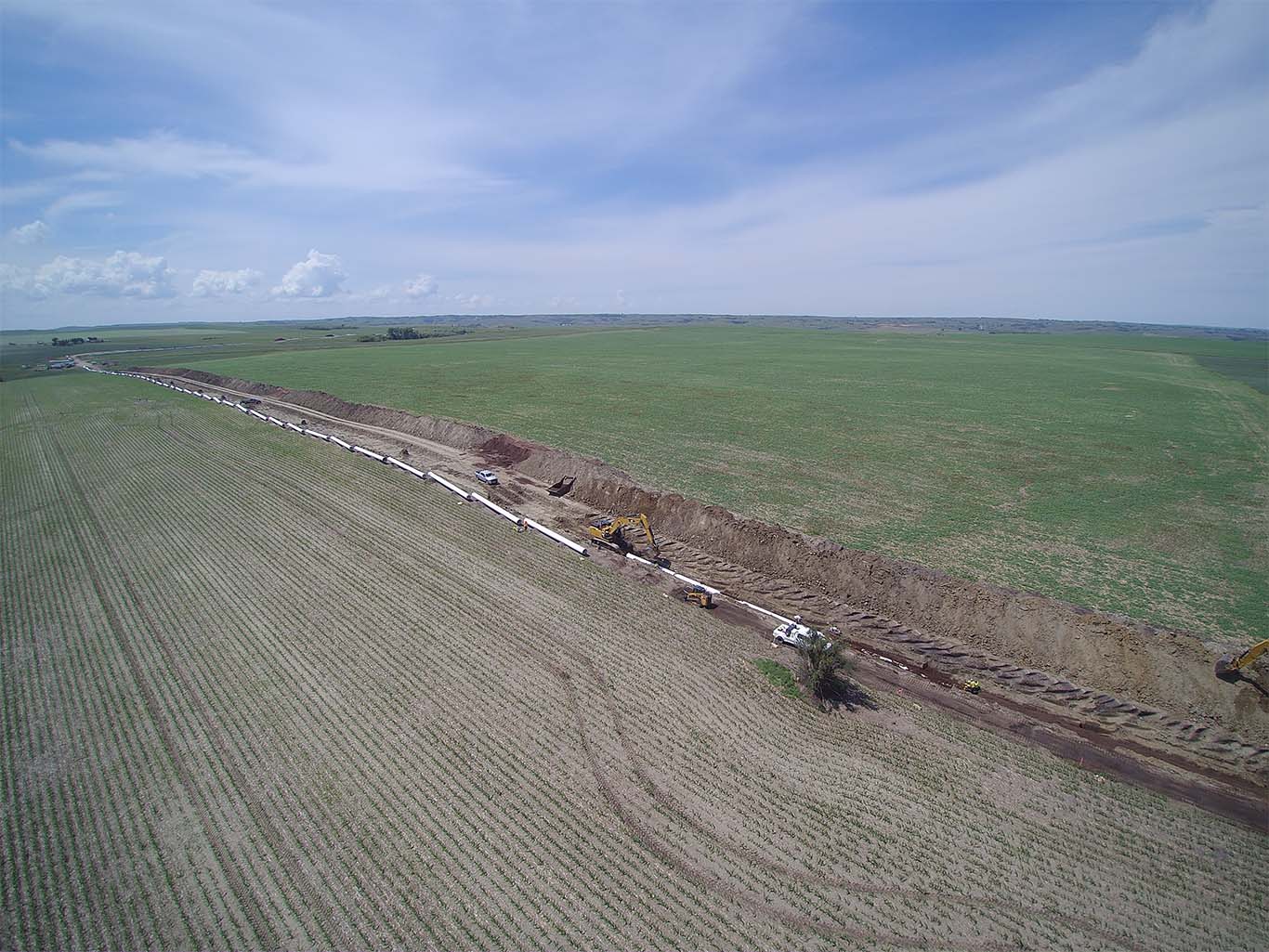

INSIGHT
Water system planning for demand growth and usage changes
Connect with us
Water system usage is in a state of constant flux, changing from season to season and year to year. Most customers judge their drinking water system by availability and pressure. For this reason, as a system grows and changes it must predict the demands the system will face in the future.
An example of this is currently happening with the Southwest Water Authority in southwestern North Dakota. Due to increased water demands on the system it has become necessary to install parallel piping segments on the raw water pipeline, which will allow more water to reach the water treatment facilities. This project consisted of installing approximately 3.5 miles of parallel piping on the raw water line near the project’s intake pump station, including two tie-ins to the existing line and appurtenance installation. This is the first in a planned series of parallel piping segments on the Southwest Pipeline Project.
This system and others in similar situations must weigh many factors when deciding what transmission and storage infrastructure improvements are the most critical to maintain quality service to their customers. Systems deal with the many unknowns of regulations and policy, customer service rate related issues, access to funds to replace and improve system components and overall long-term sustainability. Below is a list of few of the key challenges systems should consider as they implement short-term and long-term planning goals.
System improvement planning factors to consider
- Aging Infrastructure – One of the biggest issues all water systems face is understanding the useful life of their system and when it is time to replace pipelines, pump stations and tanks. Understanding your system’s weakest areas is a key first step and implementing an asset management system is one way many systems are starting to tackle this issue.
- Demand Growth and Expansion – Whether it is population growth, existing system additions or mergers, community source changes or industry driven usage changes, a water system must be aware of current and potential demands in their service area. Having an accurate hydraulic model allows the system to better understand what its options are when changes happen.
- Funding Availability – Rural systems and communities can face unique factors such as continuously shrinking service populations. Many systems near hub communities are challenged with setting rates, qualifying for necessary capital and revenue levels, and paying back loan and grant options. Systems that succeed in overcoming these challenges often implement continuous planning processes in the form of short-term planning sessions, yearly/bi-yearly strategic planning events and even succession planning for critical staff and board members.
- Regulatory Changes – Death, taxes and water regulatory changes are all things you can count on happening. Water system operations staff constantly work to stay current with regulatory compliance and understanding the steps their system must do to meet mandated state and federal regulations. The steps can cause the need for many forms of system improvements—treatment process additions, tank components and transmission modifications to name a few. Technology tools such as GIS, smart meters, leak detection and real-time SCADA data analysis are a few of the of the tools systems have started to implement to collect critical data and provide the information needed to make better system decisions.
Tell us about your project
We’d love to work with you. Tell us the services you are seeking and one of our team members will connect with you.